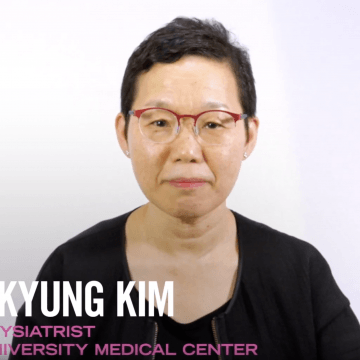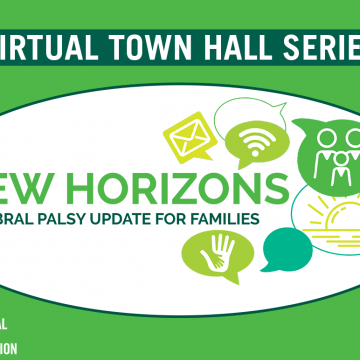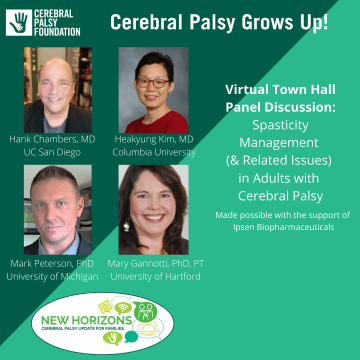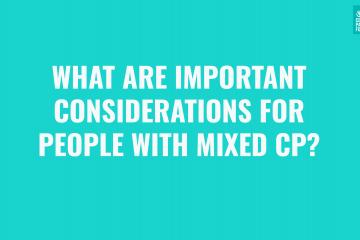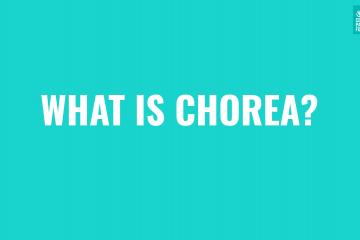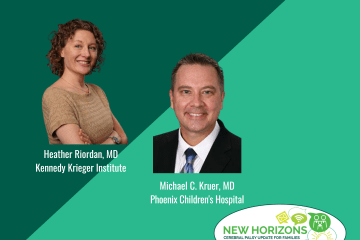Spastic Cerebral Palsy
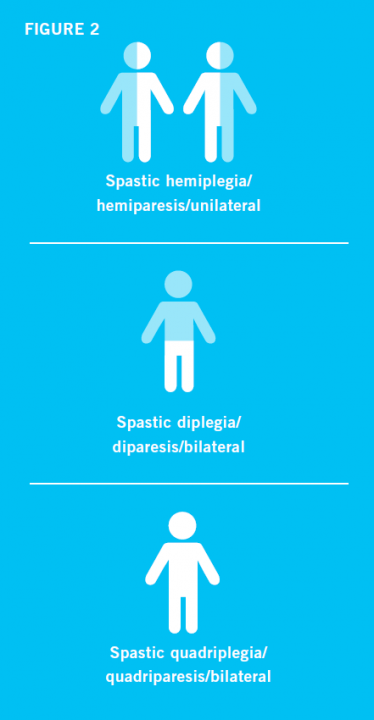
SPASTIC CEREBRAL PALSY
Spastic CP is the most common type of cerebral palsy. People will experience increased muscle tone and their movements may appear stiff or awkward. Different parts of the body can be affected:
- Spastic hemiplegia/hemiparesis typically affects the arm, hand, and leg on one side of the body.
- Spastic diplegia/diparesis involves muscle stiffness that is predominantly in the legs. The arms maybe affected to a lesser extent
- Spastic quadriplegia/quadriparesis is the most severe form of CP. It is caused by widespread damage to the brain or significant brain malformations.
-

What is Spasticity? -

Spasticity Treatment in Cerebral Palsy -

Preparing for Botulinum Toxin Injections -

Botulinum Toxin Top 10 Questions -

How Does Spasticity Impact the Body?
-

New Horizons Virtual Town Hall 8 - Deep Dive Into Understanding Spasticity Are you wondering how spasticity impacts movement, mobility and function? What tools do physicians have in their tool box to treat spasticity and how do can you help to maximize the impact of these treatments? This virtual event covers it all featuring two of the leading experts in Spasticity and Spasticity Management. -

New Horizons Virtual Town Hall 7 - Can Exercise and Physical Activity Help Reduce Spasticity and Improve Function? Our educational series continues with this virtual event featuring a multi-disciplinary panel discussion on exercise and physical activity and its impacts on spasticity and function. -

New Horizons Virtual Town Hall 6 - Cerebral Palsy Grows Up! Our educational series continues with this virtual event featuring a multi-disciplinary panel discussion on spasticity management and related issues for adults with Cerebral Palsy!
-
-
-
Relevant Research
State of the Evidence Traffic Lights 2019 
-
Recommended Reading
Spastic Diplegia - Bilateral Cerebral Palsy 2nd Edition An empowering and evidence-based guide for living a full life with spastic diplegia–bilateral cerebral palsy.
Spasticity is a team sport. You need to have a group of involved parents, involved therapists and physicians working to identify the goals. The groundwork is set by the physical therapist, and there may be various options that are provided for your child or for yourself.


